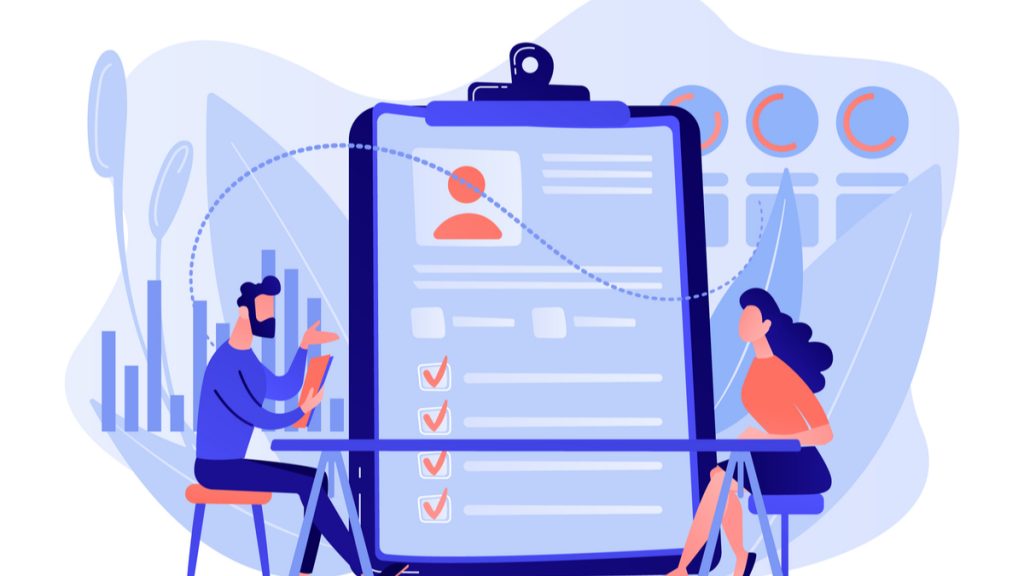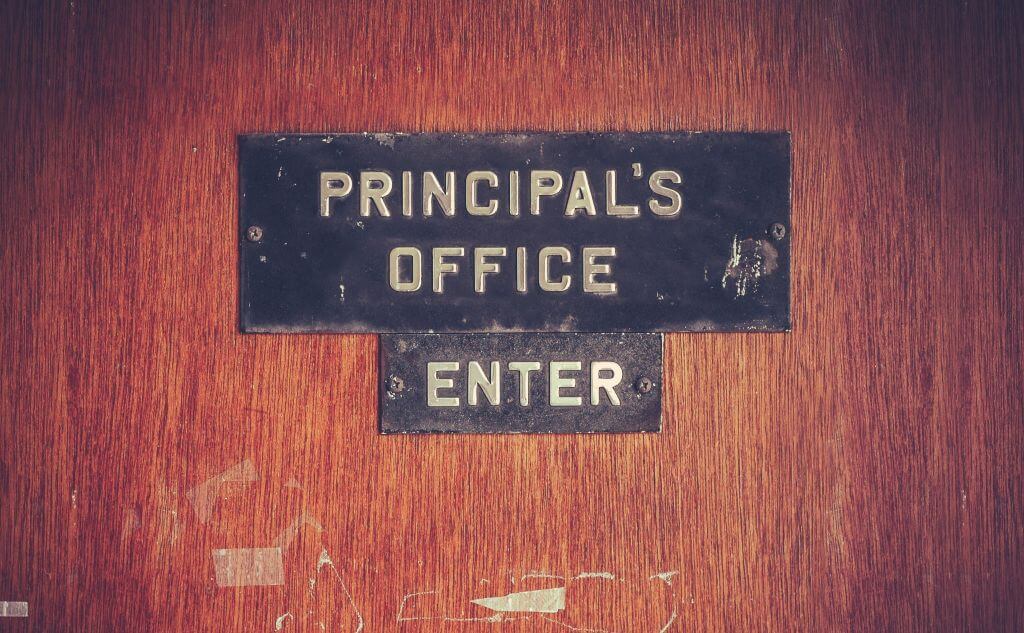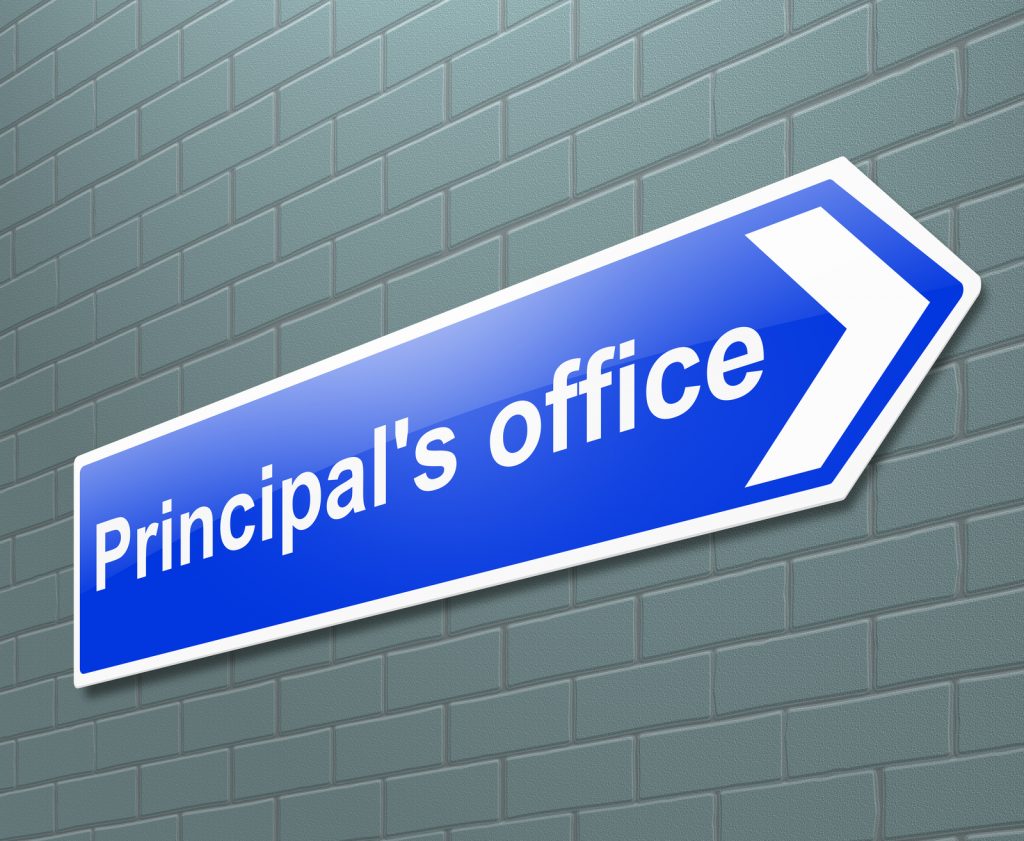 A few weeks ago, I wrote a post on how principals might conduct evaluations right now. I wrote it in response to questions I had seen on the internet, took them at face value, and crafted content I thought could be valuable.
A few weeks ago, I wrote a post on how principals might conduct evaluations right now. I wrote it in response to questions I had seen on the internet, took them at face value, and crafted content I thought could be valuable.
Then I toured some school buildings and talked with teachers who were juggling students in front of them with students tuning in from home, teachers who were reminding 5 year olds to keep their masks on and keep some distance, and library-media specialists who were solving technical problems while also managing to get their libraries running for students.
They were all upbeat and working hard, yet honestly shared frustrations and feedback. I can’t imagine how they might have responded to a principal’s “announced observation”
And then I saw this on Twitter:
I think my teacher evaluations for the year are done, goes something like this: You pivoted, adapted, you were flexible & persevered, you were resilient, you showed grace, you worked your tail off & you did it! Thank you, thank u! What educators have accomplished is unbelievable!
— Hamish Brewer (@brewerhm) September 27, 2020
Hamish Brewer’s post received a lot of love.
And it caused me to do some reflecting and rethinking.
So, while I think there might still be some useful tips in my post, I’d rather focus on just the first part. Yes, go into classrooms–virtually and/or in-person, but suspend evaluations for now, knowing that does nothing but ramp up teacher anxiety.
Instead, focus on these three purposes:
- Connector – of good ideas
- Celebrator – of student engagement and teacher innovation
- Communicator – to families and communities about all the good that is happening, with an honest assessment of any challenges we are facing and how we can support one another.
And here’s a fourth reason to go into classrooms right now: To give teachers a break.
Let the teacher use the restroom, go outside for a mask break, text or call family, grab a cup of coffee or do some breathing exercises. You get to spend some quality time with students while teachers get a much-needed and deserved moment of peace.
At this point, everything should focus on lessening anxiety so that people can do their best–which is what we are all trying to do anyway. It’s pretty unlikely that our teacher evaluation systems helped teachers become better before the pandemic and even less likely now.
So, let’s try connecting, celebrating and communicating and see what happens. I have a hunch we will get more out of this than we did from traditional evaluations.
I’d love to hear your thoughts on this.
Read More
Teacher evaluation.
Ugh.
The term evokes so many mixed emotions. Teachers often find them useless at best and fear-inducting at worst. And principals often see them as just another item to check off a list.
In my work with leaders during this challenging time, many are wondering how they will fulfill this essential job function in these new and strange times. Some feel the pressure from their state or district to get a required number of evaluations completed by a certain date. Some wonder if they should just stop altogether for at least the time being.
Now, of course, there’s another layer of complexity as teaching and learning takes place with cameras, in Google Meets or Zoom rooms or with some hybrid approach. Teachers are understandably nervous about observations–especially if they haven’t seen any benefit to the process before we entered this new reality.
So, the principal who wants to create or maintain a culture of deep and joyful learning might keep the following points in mind.
1. Get clear on your why
Start by asking yourself why you are engaged in the evaluation process at all? How will teaching and learning be served by this particular observation? How does the entire “evaluation” process help the teachers and students in my building? How will you use each interaction to celebrate strengths and build trust. (By the way, if you’re wondering what that looks like, you might check out Craig Randall’s forthcoming book, Trust-Based Observations.)
If your responses are about making sure you collect enough data to upload to the district and/or state platform, take a few steps back. Sure, that’s an important component of your job, but you’re missing a chance to support deep and joyful learning if you go in with a checklist mentality.
Instead, you might remind yourself–and your teachers that your presence in classrooms (in whatever form that takes) allows you to be a:
- Connector–of good ideas
- Celebrator–of student engagement and teacher innovation
- Communicator–to families and communities about all the good that is happening, with an honest assessment of any challenges we are facing and how we can support one another.
2. Be comfortable with change
The processes, protocols and even the framework we’ve used thus far for setting professional goals just may not work right now. Ask your teachers to tell you where they believe they should focus, what led them to that area and what evidence they will call upon to check on their progress.
Ask them, too, if they can think of alternatives to the current structures that would allow you to fulfill your obligations while also allowing for a “coloring outside the lines” mentality. They might ask for a way to substitute peer observations for principal observations. Or, they might suggest recording themselves, sharing the recording with you and then coming together to discuss. (Video is great–you both see the same thing and the good stuff can’t be missed!)
Let this be a brainstorm where there are NO bad ideas!
3. Leverage the gift of zoom!
For all that is wrong and painful about this time of pandemic, there are a few bright spots. One of those is the gift of uninterrupted one on one time. It is rare that principals ever have time to fully give their attention to one person for an uninterrupted hour. Now, we have an opportunity to engage–over zoom- with a teacher for 30 or 60 minutes without interruption.
In addition, a zoom meeting can provide a level of comfort for teachers–especially newer teachers. Instead of meeting in the principal’s office, they can sit in their own home. (Alternatively, if you don’t do this already, meeting in the teacher’s classroom can provide him or her with a sense of confidence.)
4. Be a learner
Ask your teachers to show you something new or share a new idea. This may be a new tool they have or plan to use with their students or it may be something they’ve read. After they’ve shared, ask if they’d be comfortable sharing with others in a virtual staff meeting. While many teachers don’t like the spotlight, they do love supporting their colleagues.
You might also ask if you can highlight what you observed in a newsletter to families or with your district leadership team.
5. Don’t STOP…just do it right
Yes, there have already been some horror stories about “unannounced observations” as evidenced in this Twitter thread. While many of the replies urged administrators to stop conducting observations, I disagree. It’s the principal’s job to make sure each and every student is learning deeply and joyfully–and to see to it that teachers have the resources and support to make that happen.
So, make your why clear to your teachers, be open and flexible to when and where observations happen, ask for innovative ways to connect, celebrate and report the great stuff that’s happening while being honest about challenges.
Oh, and then ask your teachers for regular feedback about your own work. It will go a long way toward building the trust necessary for deep and joyful learning…even during a pandemic.
I would love to hear how others are approaching observations and evaluations as a way to support deep and joyful learning.
Read More

How to hire great school leaders
As Jim Collins tells us, “getting the right people on the bus” is key to creating a successful organization.
Nowhere is that more true than in hiring school leaders. Teachers set the tone for deep and joyful learning in their classrooms, but if the leader is not on board the school suffers. Conversely, great school leaders create communities of deep and rigorous thinking and joyful cultures of experimentation, risk, and professional learning.
I’ve been on both sides of the interview process. Unfortunately, it has often been the case that the hiring for these essential positions comes down to opinions formed after one or two short Q and A sessions.
I get it–time is precious and these decisions often have to be made quickly. However, having some stock questions and protocols can ensure that schools and districts have the best chance of hiring the right candidates.
Here are some tips from my experience.
Invite varied perspectives to the hiring committee
When hiring a high school principal, for example, we had a mix of content area representatives. Some were department chairs, but not all. An assistant principal who was not interested in interviewing for the job was asked to be my point person at the high school. The current principal was serving in an interim capacity and had already made clear her preference to return to an elementary setting, so she helped us with scheduling and greeted the candidates. We also had school committee and community representatives, as well as at least one other principal in the district. Students have either served as part of the formal committee or as part of representative groups who meet with the candidates.
Ask for experiences not answers
Google “questions for principals” and you are likely to find a series of “warm-up questions” such as
What is your background/leadership philosophy/your strengths
Then, there might be a series of questions asking them to tell you how they might deal with one type of scenario or better.
While this may get you some good information, some of this can also be prepped heavily and.sometimes, might not be true.
It’s better to always ask for examples of what the candidate HAS done with some explanation of how they would apply what they did and what they learned to novel experiences in the future.
By the way, I always give the questions to candidates when they arrive, giving them some time to prep. It calms nerves and allows them to shine. At the very least, have the questions printed and placed in front of the candidate so they can refer back to them when responding.
Interview Questions
- In approximately 5 minutes, tell us a bit about what brings you to us today–specifically, tell us why you have applied for the position of principal of x School.
- Today’s diverse students come to us with a variety of skills, interests and passions as well as with a variety of differences, including social-emotional issues, etc. How have you led a staff to ensure equitable academic outcomes for the health and safety of all students.
- Describe what you would expect to see in an exemplary classroom?
- What steps have you taken in your current role to make data use a part of the ongoing cycle of instructional improvement? Include, if you can, the role of data in providing student interventions and supporting students with IEPs.
- Tell us about your ideal school environment and how you have worked with various stakeholders—parents, teachers, students, etc.– to develop that kind of culture in your present role.
- Please tell us about how you have worked with a teacher struggling to meet expectations around instructional practice?
- Tell us about a time you made a tough, unpopular decision in the best interest of students. Describe the rationale, process and result.
- What is a professional book you have read recently and what did you gain from it?
- Is there anything we did not cover that you would like us to know about you as we consider you as a candidate for this position?
Include a performance task
Because a 60 minute Q and A session simply won’t tell you HOW a person will execute his or her job, a performance task is a must.
Ours usually revolved around data–asking the candidate to analyze a set of data and prepare a presentation to be shared in a mock faculty meeting. You may include some guiding questions, but your better candidates will just run with it. (As an aside, if a candidate for a leadership position emails to ask if it’s “ok” to do this or that with the process or the presentation, this is probably not someone you want to make important decisions at a moment’s notice.)
Spend a full day with your finalists
Or at least several hours. Here’s the schedule we used (and sometimes adapted) for principal candidates. Clearly, our current situation highlights the need for some changes, but many of these can be adapted for a virtual setting.
- 8am: Arrive at school. Walk building with current principal or another designee.
- 9am: Observe a teacher. We put the candidates in touch with the volunteer teacher about a week before the interview day. They took it from there. On interview day, the candidate and a small subgroup of the interview committee (me, a department chair from another content area, and an assistant principal) observed the teacher. The three of us intentionally sat back, but the candidates were free to take a more active role as they might as principal.
- TAKE THIS ONLINE by using a video. If you don’t have a teacher who can provide this virtually, use one of the many videos that can be found online.
- 10:00 am: Observation debrief. This occurs in a fishbowl with the interview subgroup observes the conversation between the candidate and the teacher.
- 11:30 am: Student panel luncheon We left this wide open for the candidate’s discretion
- 1:00 pm: Parent meeting–again, we let the candidate take the lead
- 2:20 Mock faculty meeting: the interview committee participated while the candidate used this time to share his/her responses to the performance task
- 3:15 pm: Candidate meets with a small hiring committee sub-group for questions or debrief at candidate’s discretion.
This is a long day and you may need to truncate it a bit. (We’ve even done this in half a day when necessary.) But don’t be deterred –this is time well-spent. I’ve had candidates tell me–those hired and those not–that this interview experience was the best they’ve had. I’ve been on the other side and completely agree!
Ask great reference questions
So, your candidate got through the first round with excellent examples and may have wowed you during the demo day. Now is the time to check with those who have worked most closely with the candidate in prior roles to check or confirm your judgments.
Here’s what you don’t want to say: “We just met with Sally. She was great. Everyone loved her. Do you have anything to add?”
Instead, try some of these questions.
- Explain the demo day. Then, you might ask about a particular piece of it. For example, you might note that Sally used a protocol with the staff during the mock faculty meeting. What’s her usual MO when leading PLCs or faculty meetings, etc?
- Of all the people you’ve worked with in Sally’s role, where would you place her–top 5%, top 10% or other. Why?
- If I called you a year from now and told you it hadn’t worked out, what would you imagine would be the reason for that.
- What are the three words you would use to describe her? What three words would (parents/students/faculty) use?
- If you had this same position in your district, would you offer to X without hesitation?
- Can you tell me when or how you have seen X demonstrate courage to do what is right for students?
- I am really looking for ___________, why is X the right person for that?
For sure, this is a lot of time and effort. However, hiring good leaders is essential for building communities of deep and joyful learning. Not only do you get a great view of the candidate, but candidates who go through this process come away with a much better understanding of the school and district. Now that you know each other, you’ve got a better chance for a great fit.
Happy Hiring!
Read More
 There is no better way to appreciate teachers than by honoring their time and professionalism.
There is no better way to appreciate teachers than by honoring their time and professionalism.
Yet, in so many cases, time for deep, collaborative professional learning is minimal– 3 full days a year seems to be pretty standard, with common planning time during the day sprinkled here and there.
I recently conducted a programmatic review of a district that had not been able to budget full professional days for years. This was rightly viewed by teachers and administrators as the greatest barrier to progress.
The need for professional development has been highlighted by the pandemic and the forced move to “distance learning”.
In my home state of Rhode Island, the governor and education commissioner have responded to that need by issuing a common statewide calendar. In it, they provide dedicated PL days as well as common vacation days.
This gives students a much-needed break. There’s no expectation of logging into a Google meet or needing to be on their screen. Some students, especially older ones might use that as study time as they prepare for AP exams. But for younger students and their families, it’s a much-appreciated pause.
It also gives teachers protected time for professional learning without the expectation of also managing instruction. As I talked with district leaders across the state, I found that the time is being used wisely. Some are learning more about online teaching tools from district and state partners. Others are engaging in much-needed departmental or PLC teams. Some of these meetings are synchronous, others are not.
It’s wonderful that our state leaders recognize the need for protected professional learning time right now, as teachers are trying to navigate this unanticipated crisis.
Yet the need for professional learning isn’t crisis-dependent.
And providing and protecting time for that learning should be a basic condition of the profession in this country (as it is in several other nations).
So, how do we create more time?
A few ideas…
- State agencies can and should rethink “seat time” requirements–including the minimum number of days and/or instructional minutes. We know, and this time is proving it, that with the right support and direction, students can manage time and assignments outside of the classroom walls.
- Districts can scaffold PD days so that district coaches and PL leaders (including teacher leaders) can work with groups of teachers over a series of days. That might mean a series of half days for students or some other formula that allows teachers time for collaboration.
- Schools, especially middle and high schools, can allow for students to work independently and/or collaboratively in libraries orsettings on or off campus and still have that “count” toward attendance. That frees up teachers for more common planning time.
- In elementary schools, forward-thinking teachers and principals can collaborate with outside agencies for authentic experiences on or off campus that give students meaningful learning while giving teachers collaborative time. Many grant opportunities can pave the way for this.
- We can increase the use of micro-credentialing or badging, allowing teachers to work at their own pace, on their own time.
Of course, once the time is created, it must be used well.
To that I say, let your teachers lead the way.
Far too many administrators are stuck in the compliance paradigm.
- We run sessions we think teachers need –and make sure there’s an administrator in the room to facilitate the work.
- We have sign in sheets so we can track attendance.
- We collect minutes and notes (and very likely never read them).
What if, instead, we trusted teachers to lead their own learning?
When I was an assistant superintendent, we created a district-wide professional learning steering committee. Our district-wide Professional Learning Days (or Professional Development, as we called it then) had been met with “just ok” feedback. In addition, the head of the paraprofessionals’ bargaining unit let me know that they were extremely dissatisfied with what the district had been providing for professional development.
So, we set about to change that–to put people in charge of their own learning. Ultimately, two teachers became co-chairs of the committee and we collectively transformed the feeling of PD days. Faculty and staff gave positive feedback and, more importantly, more ideas for improvement. Some administrators attended sessions, others facilitated, some did a mix of both. By the time I left the district, we had ideas and plans for even more personalized and asynchronous opportunities.
No babysitting. No compliance. Just lots of good learning–which translated into deeper and more joyful learning for our students.
And with even more time, and more creative uses of time, we can do better and better by our students and ourselves.
So, let’s appreciate teachers with more than signs and gifts during a single week. Let’s give them the time they deserve to hone their skills and their craft. Let’s appreciate their intellect and expertise by giving them the gift of time.
Read More
Teachers are overwhelmed. Parents are overwhelmed. Leaders are overwhelmed.
And, to be fair, this feeling isn’t new for educators, though it’s magnified now.
It’s time to simplify.
Simple does not mean easy. Simple does not mean that we are letting up on learning.
Instead, when we simplify, we arrive at what’s really essential.
When I’ve worked with curriculum teams, we usually start with the work of DuFour, et. al.
Here are their “big questions” to guide teaching and learning.
- What do we want all students to know and be able to do?
- How will we know if they’ve learned it?
- How will we support students when they struggle?
- How will we enrich the learning for students who are already proficient?
Educators always love these questions.
Great, I say. So, now, let’s answer that first question.
Teachers pull out their state standards, textbooks, final exams, etc and soon our response to question 1 fills up pages.
It becomes clear that we cannot teach everything if we want students to learn deeply and joyfully.
We need to strip down to the essential standards.
Teachers understandably have trouble with this. EVERYTHING feels essential.
But then I ask them to picture a capable student in their class. Now, consider that this student will endure some tough circumstances this year–perhaps illness–that causes him/her to be out for a significant portion of the year.
Most teachers can’t conceive of having this student repeat an entire year or course. So they then consider what the student would REALLY need to know and be able to do in order to move beyond this class or course.
We use this guidance from Larry Ainsworth to choose our essential standards (aka Power or Priority Standards.)
Essential standards are those that exhibit:
- Endurance–skills and knowledge needed for life outside this course
- Leverage–skills and knowledge from this course that help us learn and understand standards in other courses
- Readiness–skills and knowledge that we must have to advance to the next year/course
In fact, there are schools and teachers that do this regularly for students with special circumstances.
We just never considered that we would need to do this for all students…in all subjects.
But we can. Simplify. Get down to the essentials–the real and true essentials and go from there.
Right now, I would ask teachers to consider the ONE thing students must know or be able to do between now and next year. How can we teach that? How will we (and students) know if they’ve learned it?
Then, go on to prioritize the NEXT thing on the list and so on. If the first is all we can reasonably achieve this year, so be it.
Kudos to those districts that have made this focus on essential standards crystal clear, reducing overwhelm and giving space for deep and joyful learning.
#ourFCPS friends- Essential Standards for remaining instructional weeks for ES & MS are posted to Distance Learning Support (teacher-facing) BB site. For ES, also posted to ECF google site at https://t.co/LauP8aXIwm (FCPS google log-in required). @kmkoelsch @christiepday pic.twitter.com/uP74XXrrLp
— Andrea Hand (@AndreaHand2) April 12, 2020
Read More

This is surreal!
“This just doesn’t feel right! I miss the kids. I miss the teachers. I miss visiting classrooms, shaking hands with students as they enter the building, laughing with teachers at lunch duty!”
This, or some version of this, is what I’m hearing from the principals I work with.
Most school leaders hate to be out of their schools. Whether it’s being called away to a district meeting or staying home sick (a rare occurrence), most principals will do anything to avoid being out of the building.
So, sitting at home–or behind your desks in empty schools–is no doubt a jarring experience.
Yet all over the country, principals like my friend Anne in Maine tell me the current crisis has raised their game.
In conversations with school leaders over the phone, Zoom, and Twitter, leaders have shared the ways they are making connections, supporting learning, and–perhaps most importantly–demonstrating their own vulnerability.
Here are some awesome examples of leading remotely:
Fostering connection:
- Asking teachers for names of students they are concerned about. Depending on the size of your school, call one or 2 from each class, each week/day. On a schedule that works for you.
- Sending a thank you note to each staff member with something you’ve admired about him/her and perhaps never said. One or two sentences goes a long way.
- Creating themed weeks–connect to school spirit and/or school mission.
A1: Search #StayConnectedCPS and see photos of our amazing and innovative students and staff taking on our Chesapeake 5Cs Virtual Challenge last week. Lifelong learners in action! #valinchat pic.twitter.com/7SbNLU9K2n
— Alaina Trott (@AlainaTrott) April 2, 2020
Instructional Leadership:
- Dropping in on a synchronous zoom session.
- Sharing an article/podcast resource.
- Offering 1:1 office hours with teachers to check in and provide any support or feedback requested
A3. Zoom #valinchat I use for office hours to hang out with the #5800family because I miss them ❤️ pic.twitter.com/YhT2cGl21b
— Shameka N. Gerald (She/Her) (@Shameka_Gerald) April 2, 2020
Vulnerable Leadership:
- Set up calls with teachers–ask them how you can do more for them–in crisis and not.
- Try a new tool publicly. It won’t be perfect, but that’s ok–we’re all in the same boat right now!
- Use this time to try something new–painting, poetry, etc–and share the results.
A2: My kids + I are challenging ourselves to try/learn something unrelated to SOLs each week. I challenged myself to learn how to watercolor + I am finding it's very calming! Making sure to carve out "me" time, being outside, and virtually connecting with friends! #VaLinChat https://t.co/3jmJiJGCZw
— Megan Howland (@meganahowland) April 2, 2020
Thanks to all who are leading…and sharing! To share more examples or get some coaching support, you can contact me here.
Read More

